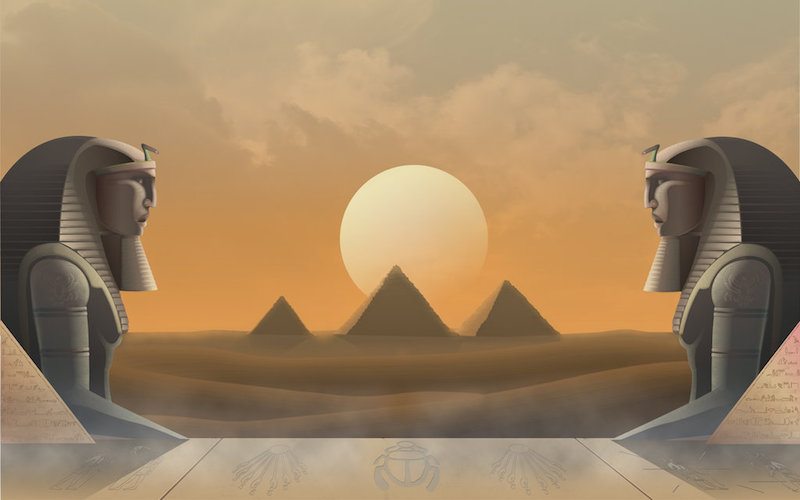Ancient Egypt, 3100 B.C. – 332 B.C.
Ancient Egypt is located in northeastern Africa in what is still modern-day Egypt. This civilization had polytheistic beliefs—this means that there were many gods, and in fact, the rulers themselves were often considered gods. Religious beliefs guided virtually every aspect of daily Egyptian life. Part of the focus of Ancient Egyptian religion was preparing for an afterlife, so citizens devoted a lot of time, money, and effort into preparing for the journey after death. In fact, they were embalmed when they passed in an effort to preserve the body for the afterlife. They were often buried with personal belongs that they may need in the afterlife like food, furniture, or games, and those who were considered royalty were often buried with their slaves (who were likely alive at the time of burial).
What is commonly referred to as “Ancient Egypt” lasted from about 3100 B.C. to 332 B.C. It was a great and powerful civilization that had a focus on ornate buildings and sculptures. The Great Pyramid of Giza is likely its most well-known contribution to history. The pyramid is 481 feet tall and, of course, built during a time when there were no cranes or machines to lift the heavy stone that was used to create it.
Ancient Egypt also contributed to historical development through a number of inventions. For example, the women and men used eye makeup, and even today it is still being created using the same techniques that the Egyptians used thousands of years ago. Egyptians also pioneered the first written language, and although it was mostly pictures, it gave rise to the first writing system.
They also used papyrus as a form of paper, something never done before. They kept one of the first known calendars tailored to the seasons so they could track the flooding season of the Nile River. They may have also been responsible for the invention of the plow, toothbrushes, breath mints, and bowling.
Expand your knowledge universe in just 5 minutes a day via bite-sized email courses.
Share with friends:

